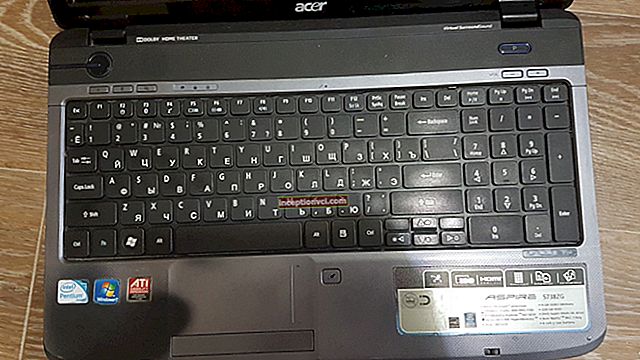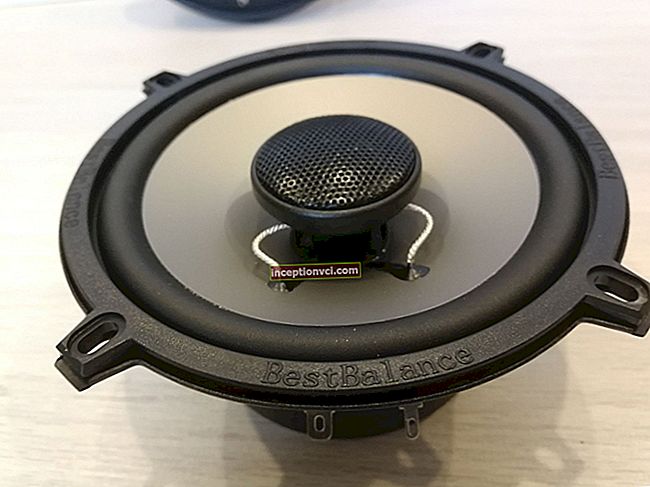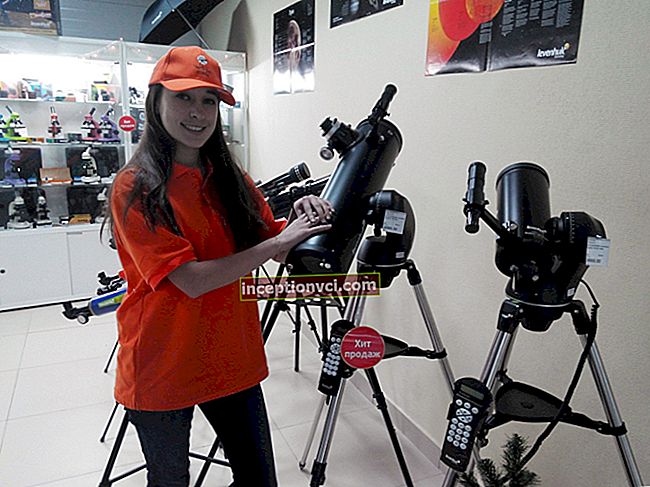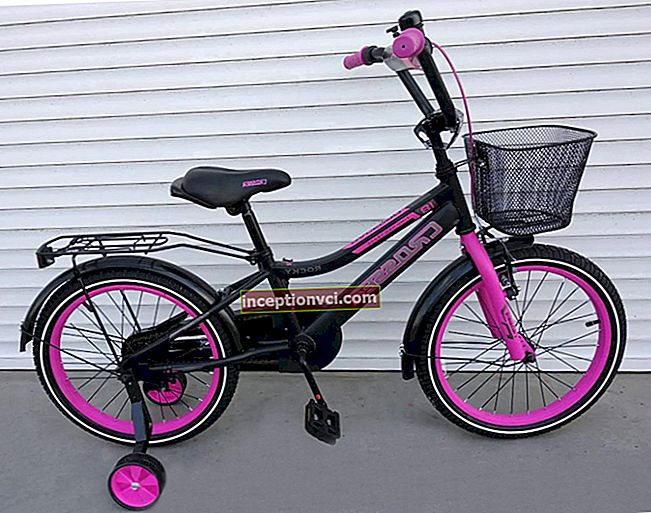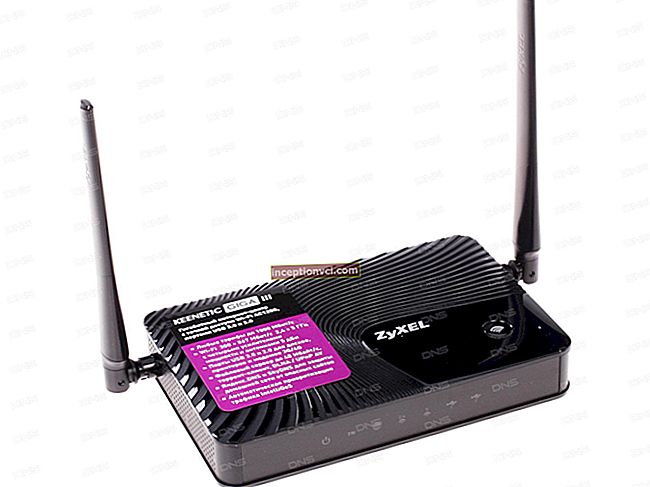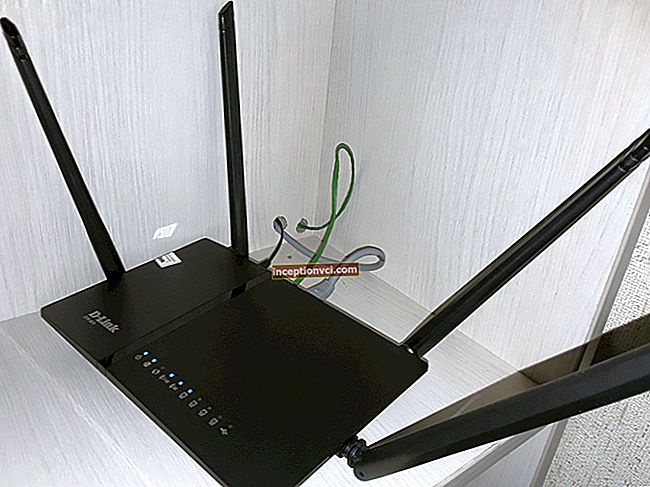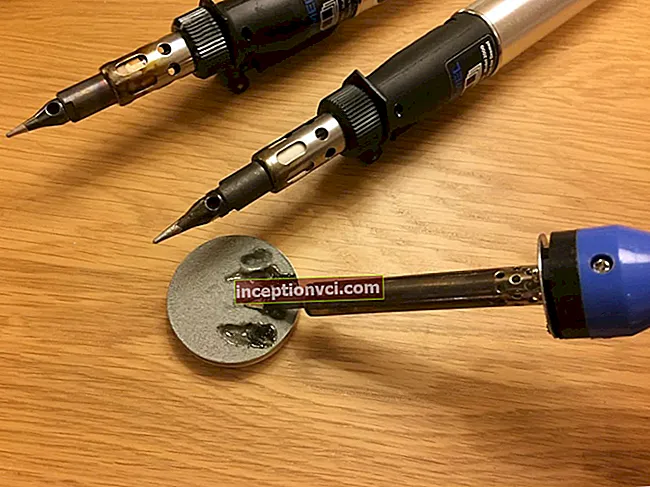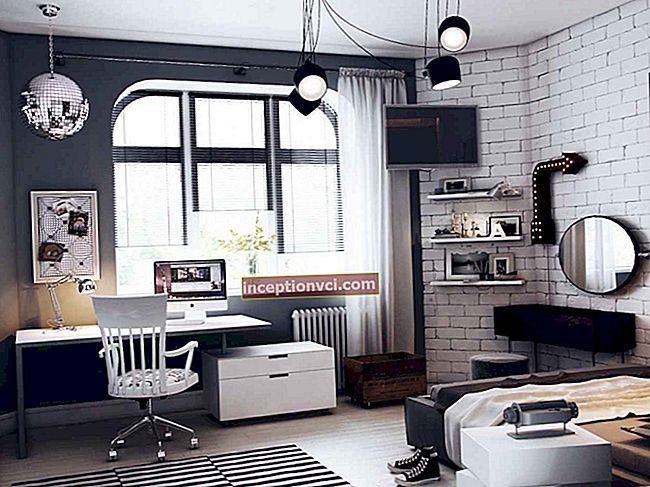At Mobile World Congress 2012 in Barcelona, HTC unveiled a new line of smartphones - One V. New solutions in design and performance will ensure the popularity of these devices.
The One S smartphone is the mid-range model in the One line. Despite this, today it is not inferior in popularity to the flagship One X.
The HTC One S is a very stylish, slim and attractive smartphone.
The first thing that catches your eye is the thickness of the device. According to HTC, One S is the thinnest smartphone it has ever released.
The most notable features of this device include a 4.3-inch Super AMOLED display with qHD resolution, a dual-core processor from Qualcomm, and a camera similar to that of the flagship One X.
HTC One S is designed to compete with the mid-range model of the NXT line from Sony - Xperia P. The competitors of this smartphone can also be attributed to the worldwide popular Samsung Galaxy S II.
In my opinion, One S is the most balanced model in the One line: in terms of performance, ergonomics, and battery life. Although technically more modest than the flagship, this does not affect the experience and usability.
I present to your attention a review, with the help of which you can not only find out all the details about HTC One S, but also make sure that this smartphone is one of the most advanced Android devices on the market today.
Contents of delivery
HTC has developed a new box design for One line smartphones - a white cardboard box with rounded corners. Of course, this is not so important for the buyer, but it is still worth noting. Unfortunately, apart from the appearance of the box, there is nothing extraordinary in the One S package. The package includes the following items: the smartphone itself, charger, microUSB - USB cable, stereo headset, user manual. Unfortunately, the device does not ship with Beats Audio branded headphones (like the Sensation XL), even though the One S uses technology from that developer. Of course, this does not affect the performance and functionality of the smartphone. Probably, this decision of the manufacturer is explained by the desire to reduce the cost of the device. Unfortunately, not only One S is not supplied with such headphones, but also other models of the One line: One V and One X. Dimensions (edit) The smartphone has the following dimensions (HxWxT): 130.9x65x7.8 mm. The device weighs 119.5 g. Such dimensions and weight cannot but rejoice, since the smartphone boasts powerful performance and a large display. Design, construction and controls There are more than enough smartphones with touch screens in today's market. But there are not so many devices whose design attracts at first sight. The design of the One S is almost perfect in my opinion. It contains not only new design solutions, but also those that can be found in previous HTC smartphones. The build quality of the One S is impeccable. The design of the smartphone is monolithic and made of anodized aluminum (gray model). The body of the black model is also made of this metal, but during production it is subjected to plasma-electric anodization. Therefore, in the black model, the aluminum surface is slightly rough, and in the gray model, it is smooth. The only structural elements that are made of plastic are small inserts on the back of the device. They fit tightly and do not squeak. These inserts are made of plastic in order to improve signal reception. On the front, high-quality glass is used to protect the display from damage.It goes a little to the side edges (which is not typical for HTC smartphones). Thanks to this, the smartphone has a more attractive and extraordinary look. HTC designers decided to move away from rounded shapes and gave the side edges of the device sharper lines. This decision did not affect the ergonomics of the smartphone: it fits perfectly in the hand. As I noted, the One S is available in two color options: black with a red plastic backing (under the removable cover) and gray and blue. More attractive, in my opinion, is the gray model, the color of which has a soft gradient transition from light gray to dark gray. There is no such effect in the color version of the black model. It should be noted that the One S is a very thin smartphone. As I already noted, its thickness is 7.8 mm. Quite frankly, this figure is really impressive. For comparison, the thickness of the Apple iPhone 4S is 9.3 mm. The engineers of HTC have managed not only to conclude a rich "filling" in such a thin case, but also to make the smartphone quite light. At the same time, the device slightly weighs the hand, giving the impression of a solid device. It is also worth noting that the smartphone is convenient to carry not only in a bag or backpack, but also in jeans or a shirt. Due to the absence of protruding elements (for example, such as the bend in the One V), there is no need to experience any inconvenience. There is only one removable element in the entire design of the HTC One S smartphone - this is the plastic cover at the top of the back of the device. Under it is a slot for installing a microSIM card, as well as wireless modules. Almost the entire front of the smartphone is occupied by the display. It is protected by durable toughened Gorilla Glass. It practically does not get dirty. Even if fingerprints or other marks appear, they are easily removed due to the absence of protruding controls. In the upper part of the front panel there is a hole for the earpiece (a kind of grille). It is done right in the frame of the case. This decision of the designers had a positive effect on the appearance of the smartphone. Under the loudspeaker grill there is an LED indicator that notifies the user about various events (new messages, missed calls, etc.) and the state of the battery charge. It should be noted that the indication is quite informative. When the battery level is low, it blinks red, while charging it lights up red, when connected to a computer and / or a fully charged battery, it lights up green, if there are missed calls, new SMS messages, letters or other notifications, it blinks green. The indication is visible even in bright light or outdoors in sunny weather. To the right of the earpiece is a front-facing 1.3-megapixel VGA camera, proximity and light sensors. Following current trends, HTC engineers have equipped the One S with a minimum of mechanical controls. Given that the smartphone runs on Android Ice Cream Sandwich, the manufacturer also had to reduce the number of touch keys (in accordance with the requirements of this platform). Now there are only three of them (from left to right): "Back", "Home", "Open applications". The touch keys are located quite well: each of them can be reached without much difficulty. They have simple and straightforward markup. The touch keys are equipped with soft white backlighting. I also note that when you press them, the smartphone vibrates slightly. In my opinion, the manufacturer could equip the One S with a touch-sensitive key to bring up the context menu (in applications), which is invoked by clicking on the virtual black bar at the bottom of the display. While the One X's 4.7-inch screen allows for extra space for this control, the One S is not very appropriate. Nevertheless, the absence of an additional touch key is not a disadvantage, since it is quite convenient to call the context menu. A microphone is located at the bottom of the device. At the top end of the case there is a 3.5 mm jack for connecting headphones or a headset. There is also another microphone for assessing the ambient noise level. On the top of the smartphone there is a screen lock button, when you hold it down, a menu appears that provides the following options: turn on / off the device, reboot, turn on the "Airplane" mode. This key protrudes slightly from the case, so it is very convenient to press it. There is also a small recess in this part of the body. It will allow you to remove the plastic cover, under which there is a slot for installing a microSIM card. To remove the cover, just pry it off with your fingernail and pull it towards you. HTC engineers took into account the fact that dust can accumulate at the junction of plastic and metal. Therefore, they have developed a fastener with which the cover is attached very tightly and securely. Since there is a camera and a flash underneath it, there are two holes of the corresponding sizes. Below, on the back of the device, there is another insert made of soft-touch plastic. It is not removable. This insert provides slots for the multimedia speaker and microphone. The HTC logo is engraved in the center on the back of the device. Below, above the plastic insert, there is an inscription "beats audio" informing that the smartphone uses technology from the developer of the same name. There is a volume rocker on the right side of the device. It protrudes slightly from the body. Therefore, it is quite convenient to press it even to the touch. The volume rocker is almost identical in size to that of the flagship One X. There is a micro-USB connector on the left side of the One S case. With it, you can not only connect your smartphone to a computer, but also charge the device's battery. This connector is not protected by a cover, which, in my opinion, is a plus. Display Undoubtedly, one of the advantages of the HTC One S smartphone is its screen. The device is equipped with a Super AMOLED touchscreen display with PenTile technology, which is slightly inferior in technical characteristics to Super LCD 2. The main advantages of PenTile technology are excellent picture brightness and high energy efficiency. The One S's screen has large viewing angles and excellent color reproduction. The display remains readable both indoors with bright lighting and outdoors in sunny weather. The physical dimensions of the screen are 95x53 mm (HxW), the diagonal is 4.3 ". Given that the pixel per inch ratio is about 256 ppi, it is difficult to see individual pixels with the naked eye. The display shows 16 million colors. Its resolution is 960x450 pixels. The fonts on the display are displayed quite clearly and neatly. The user is given the opportunity to choose one of four available options for their size for applications and menus. The screen supports multi-touch technology and is capable of handling up to five simultaneous clicks (by default, the maximum number of simultaneous touches is three). Swiping from bottom to top with three fingers will launch the Media Link HD application. Corning's second generation Gorilla Glass is used to protect the screen from environmental influences. Its advantage is that it practically does not get dirty and does not "collect" fingerprints. This is due to the fact that there is an oleophobic coating on the protective glass. The light sensor does an excellent job and correctly adjusts the display brightness depending, for example, on the light intensity of the room. There are also no complaints about the proximity sensor: it automatically locks the screen during a call. Platform The HTC One S smartphone uses a powerful dual-core processor from Qualcomm - MSM8260A Snapdragon. Its clock frequency is 1.5 GHz. The HTC One S also features an Adreno 225 graphics chip, 1GB of RAM, and 16GB of ROM.One cannot but pay attention to the fact that about 11 GB of internal memory is available to the user. In my opinion, the manufacturer should have equipped this device with at least 32 GB of ROM, since there is no slot for installing a memory card. Considering the cost of the One S, this limitation of the amount of internal memory available to the user can be considered a small drawback of this smartphone. The way out of this situation is that online storage Dropbox and Skydrive provide 25 GB of free space for free. HTC One S runs on Android Ice Cream Sandwich operating system (platform 4.0.3). The smartphone uses the proprietary shell HTC Sense 4.0. The smartphone works very quickly and without any freezes (even under intense load). Therefore, there are no complaints about processor power and system performance. It is also worth noting that the difference between the performance of the HTC One S and the HTC One X is almost imperceptible. This is worth paying attention to, since the middle model of the One line is still equipped with a weaker processor (compared to the quad-core NVIDIA Tegra 3 in the flagship). And although there is practically no difference in the speed of the system between these smartphones, according to the results of synthetic tests (which will be discussed a little later), One X is more productive. Interface As I already noted, the One S is equipped with an updated version of the interface from HTC - Sense 4.0. The main difference from the standard Android 4.0 shell is a different organization of desktops, an impressive variation of pre-installed widgets and a redesigned icon design. At the top of the display there is a line on which various data are displayed: signal reception level indicator, time, battery charge, active connections, and so on. If you click on it, you will see information about which programs were downloaded, which messages or letters were received, which files were received via Bluetooth. One of the differences between HTC Sense 4.0 and earlier versions of this interface is that a separate Task Manager menu is provided to view the list of running applications (to access it, you need to click on the bar at the top of the display). A separate tab contains information about free and used memory. As you know, HTC Sense is one of the most attractive interfaces. It is attracted not only by a beautiful design and ease of use, but also by a large number of functional widgets, some of which have several design options (for example, weather or clock). The user can also resize each one. Several widgets can be placed on each of the desktops (the number will depend on their size). It is possible to place folders and application shortcuts on desktops. Of course, other widgets (from third party vendors) can be installed as well. To manage widgets, the "Widgets" tab is provided. Clicking on it will open a menu displaying desktop thumbnails. Below them is a list of available widgets. It is enough just to drag the selected element to the required work area. The Weather Clock widget can rightfully be considered the hallmark of the HTC Sense shell. In the updated version of this interface, it has been changed. This widget is available in three variations of the size and displayed information: 4x2 ("Clock with weather"), 4x1 ("Clock with weather"), 4x2 ("Clock with friendstream"). You can also set one of the following options for the appearance of the Clock widget: Analog clock (4x3), Analog clock (1x1), Traffic clock (4x2), General clock (4x2). The "Contacts" widget has undergone some changes. They touched its size. Unfortunately, they decided to exclude the 4x3 aspect ratio, which is loved by many. Now there are only two options for the size of this widget: 4x4 (two ways of displaying data), 4x2. I also note that scrolling is now available in widgets from other developers (of course, only in those that provide such an opportunity (for example, in Plume)). As with the One X, the maximum number of desktops is seven, the minimum is one. Scrolling between them is smooth without any freezes or braking. The ability to cycle through the desktops is not provided. That is, if you scroll to the last of them, you will have to scroll back to go to the first. An attractive feature (and even an advantage) is that HTC pays attention to the personalization of the device. For this, the corresponding settings are provided, which allow you to set the background image, select the cover and the theme of the design. Any picture from the device memory can be used as a wallpaper. Unlike the younger model One V, the One S supports animated wallpapers. The smartphone is preinstalled with 5 scenes and 4 covers. If you wish, you can download additional design elements from the HTC branded online store. At the bottom of the main screen is a panel with five shortcuts (from left to right): "Call log", "Mail", "Menu", "Messages", "Camera". Each of them is customizable (except for the menu). To place the required shortcut on the panel, you just need to drag it there. In HTC Sense 4.0, the developers have improved the addition of folders to the desktop. Now it is enough to drag the selected icon onto another, after which they will be combined into a folder. If there is only one application left in the folder, then it automatically disappears. In the updated version of HTC Sense, the maximum number of shortcuts in a folder on the desktop is 12. It should be noted that the lock screen is very functional. By default, it displays the time, date, operator name, and four icons from the panel at the bottom of the main screen. A metal ring is provided to unlock the display: just drag the virtual part up. It also provides the ability to design the lock screen. So, you can place a background picture, clock, weather, photos and messages from social networks on it. Each of these design elements is decorated with animation, making it look very impressive. There are a total of eight lock screen design options. The updated version of HTC Sense interface has added "Important events" and "Contacts". In the first case, the following data is displayed on the lock screen: new letters (e-mail) and SMS messages, to-do list from the calendar, missed calls. In the second case, a list of contacts selected by the user is displayed above the metal ring. In order to make a call, you just need to drag the virtual part onto the contact icon. Also, one must pay attention to the fact that now, when the screen is locked, you can use the system bar (at the top of the display). In version 4.0 of the HTC Sense interface, the menu has been improved. It is now divided into several work areas. Each of them displays 20 icons. Scrolling between working areas is carried out in a horizontal plane. The following options are available for sorting icons: alphabetically, by date. At the bottom of the screen there are three tabs: "All", "Frequent", "Downloads". The first one provides access to the entire list of installed applications. The second tab contains shortcuts to programs that are used most often. In the third tab, you can find a list of applications that the user installed on their own. In each of these sections, there is a tab at the top that provides access to the settings, the Play Store online application store, and the Search function. To view the list of recently launched applications, use the Open Applications softkey. This menu has a rather original design in the form of a three-dimensional list. As in the One X, running tasks are displayed in the form of vertical thumbnails of open windows. It only displays screenshots (not the apps themselves). This little trick allows you to save RAM. Therefore, you will have to wait a few seconds before the application reopens. HTC Sense 4.0 uses a new font - Roboto. Also a small change in the updated interface is that the keyboard is now gray (not white). In my opinion, such a decision can be considered successful. For novice users, the question may arise: "Is smartphone control simple and intuitive?" Of course, the manufacturer did everything possible to make the interface understandable even for those who do not yet have experience using the Android operating system. Nevertheless, the first time you have to get used to and, let's say, get used to, because the level of "simplicity and intuitiveness" of the interface, in my opinion, is lower than that of the Apple iPhone 4S. Communications HTC One S operates in the following frequencies: GSM 850/900/1800/1900 MHz, UMTS 850, 1700/2100, 1900, 2100 MHz. The device supports both high-speed data transfer standards - HSDPA + (42.2 Mbps) and EDGE. A micro-USB connector is provided to connect a smartphone to a computer. Micro-USB –USB (2.0) cable is included in the kit. When the One S is connected to a PC, the user can choose one of the following operating modes: data synchronization (using HTC Sync), connecting as a storage device, charging only, connecting the smartphone to the Internet via a PC (or PC via a smartphone). HTC One S is equipped with several wireless modules. The first is Wi-Fi 802.11 b / g / n. There are no complaints about the operation of this wireless module. One cannot but pay attention to the fact that network passwords that were entered once are stored in the device's memory (automatic connection is also carried out if the smartphone is within their range). HTC One S is equipped with Bluetooth 4.0 (with support for the most common profiles, including A2DP). I also note that the device has a Wi-Fi Direct function, with which this smartphone can be used as a network access point for other devices. The user is given the opportunity to enter a limit on the number of users. You can also set a password to prevent unauthorized connection to the network through an access point created on HTC One S. You can individually allow or deny each new connection. To enable the Wi-Fi Direct function, select the "Portable hotspot" option in the wireless interfaces menu, and then - "Portable Wi-Fi hotspot". The user is given the opportunity to choose one of the following connection types: WPA. WPA2, WEP. One S supports DLNA technology. The smartphone supports HDMI (despite the fact that the device does not have a dedicated connector for this interface). One S enables HD / FullHD video playback on a TV using an MHL cable (not supplied). Let me remind you that MHL is a new standard that combines the functionality of the micro-USB and HDMI interfaces. Battery HTC One S is powered by a non-removable lithium-ion battery. Its capacity is 1650 mAh. According to official data, a full battery charge will last for 7 hours of battery life in a talk mode, in a standby mode - for 430 hours. In practice, everything is almost the same. A full battery charge lasts about 6.5 hours of battery life under heavy load (video playback, maximum brightness, wireless modules active). With a standard load (listening to music, viewing photos, surfing the web, about one hour of calls (on the 2G network)) this figure is 21-22 hours. To be continued...












































